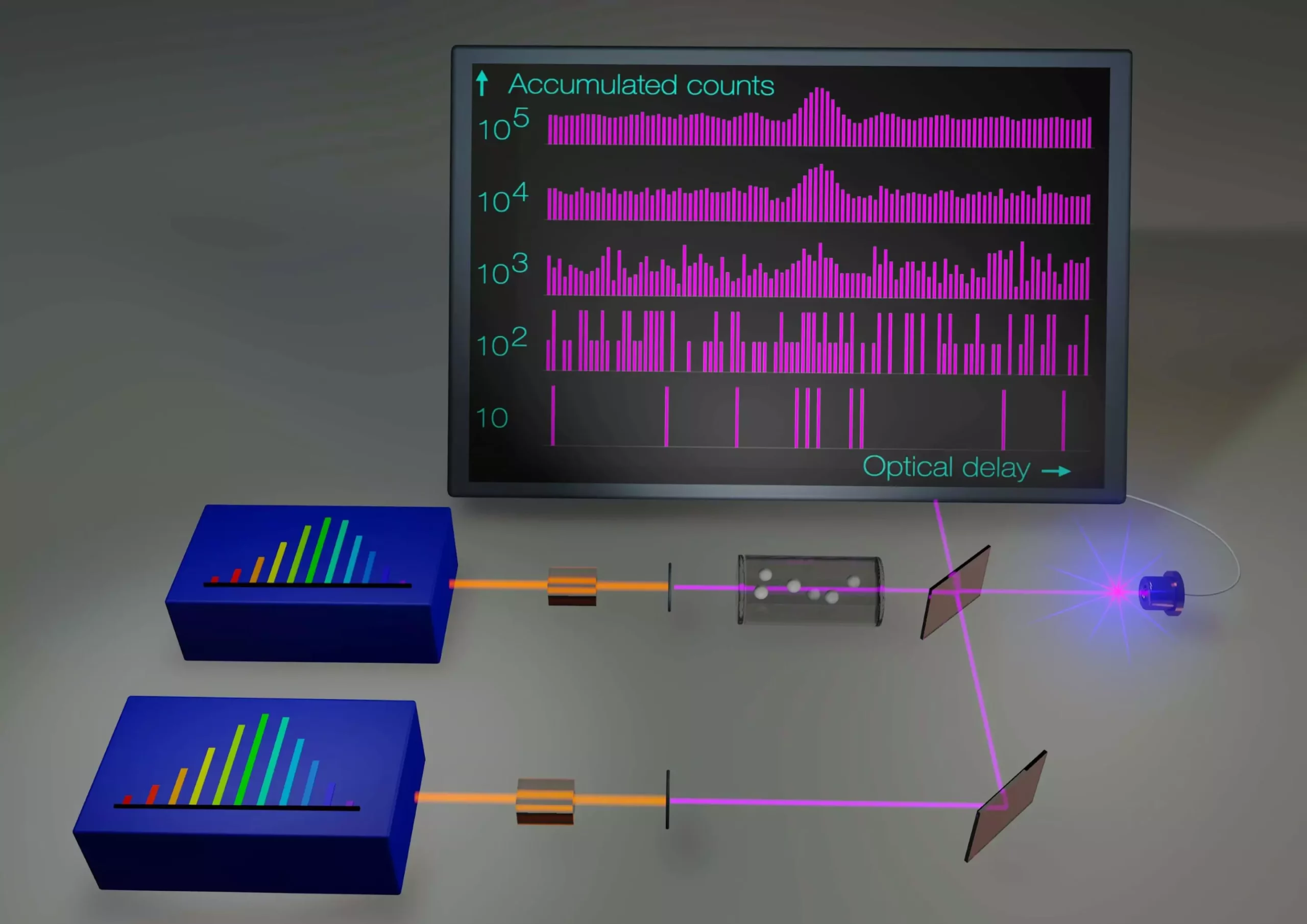Ultraviolet spectroscopy has long been a crucial tool in the study of electronic and rovibronic transitions in atoms and molecules. The recent breakthrough by the scientists at the Max-Planck Institute of Quantum Optics in implementing high-resolution linear-absorption dual-comb spectroscopy in the ultraviolet spectral range marks a significant advancement in the field. This achievement opens up new possibilities for conducting experiments under low-light conditions, thus expanding the applications of ultraviolet spectroscopy in various scientific and technological fields.
Dual-comb spectroscopy has emerged as a powerful technique for precise spectroscopy over broad spectral bandwidths. Traditionally used for infrared linear absorption of small molecules in the gas phase, dual-comb spectroscopy relies on measuring the interference between two frequency combs with slightly different repetition frequencies. These frequency combs, consisting of evenly spaced laser lines, act as a precise ruler for measuring light frequencies with extreme accuracy. Unlike traditional spectrometers, dual-comb spectroscopy offers high precision and accuracy without the geometric limitations.
One of the main challenges in applying dual-comb spectroscopy has been the requirement for intense laser beams, making it less suitable for scenarios where low light levels are critical. The MPQ team has successfully demonstrated that dual-comb spectroscopy can be utilized in low-light conditions at power levels significantly weaker than those typically used. By developing experimental setups with different types of frequency-comb generators and implementing a photon-level interferometer, the team achieved a breakthrough in utilizing available light effectively for experiments. This achievement paves the way for the application of dual-comb spectroscopy in challenging scenarios with low light levels.
The researchers at MPQ addressed the challenges associated with generating ultraviolet frequency combs and building dual-comb interferometers with long coherence times. By controlling the mutual coherence of two comb lasers with one femtowatt per comb line, they demonstrated an optimal build-up of counting statistics over extended periods. This level of control over coherence and efficiency is crucial for extending dual-comb spectroscopy to even shorter wavelengths, enabling precise vacuum- and extreme-ultraviolet molecular spectroscopy over broad spectral ranges.
The potential applications of ultraviolet dual-comb spectroscopy are vast and promising. By overcoming the challenges posed by low light levels and extending the capabilities of dual-comb spectroscopy to shorter wavelengths, the research conducted by the MPQ team sets the stage for groundbreaking advancements in precision spectroscopy, biomedical sensing, and environmental atmospheric sounding. The future of ultraviolet spectroscopy is bright, with exciting opportunities for further exploration and innovation.


Leave a Reply